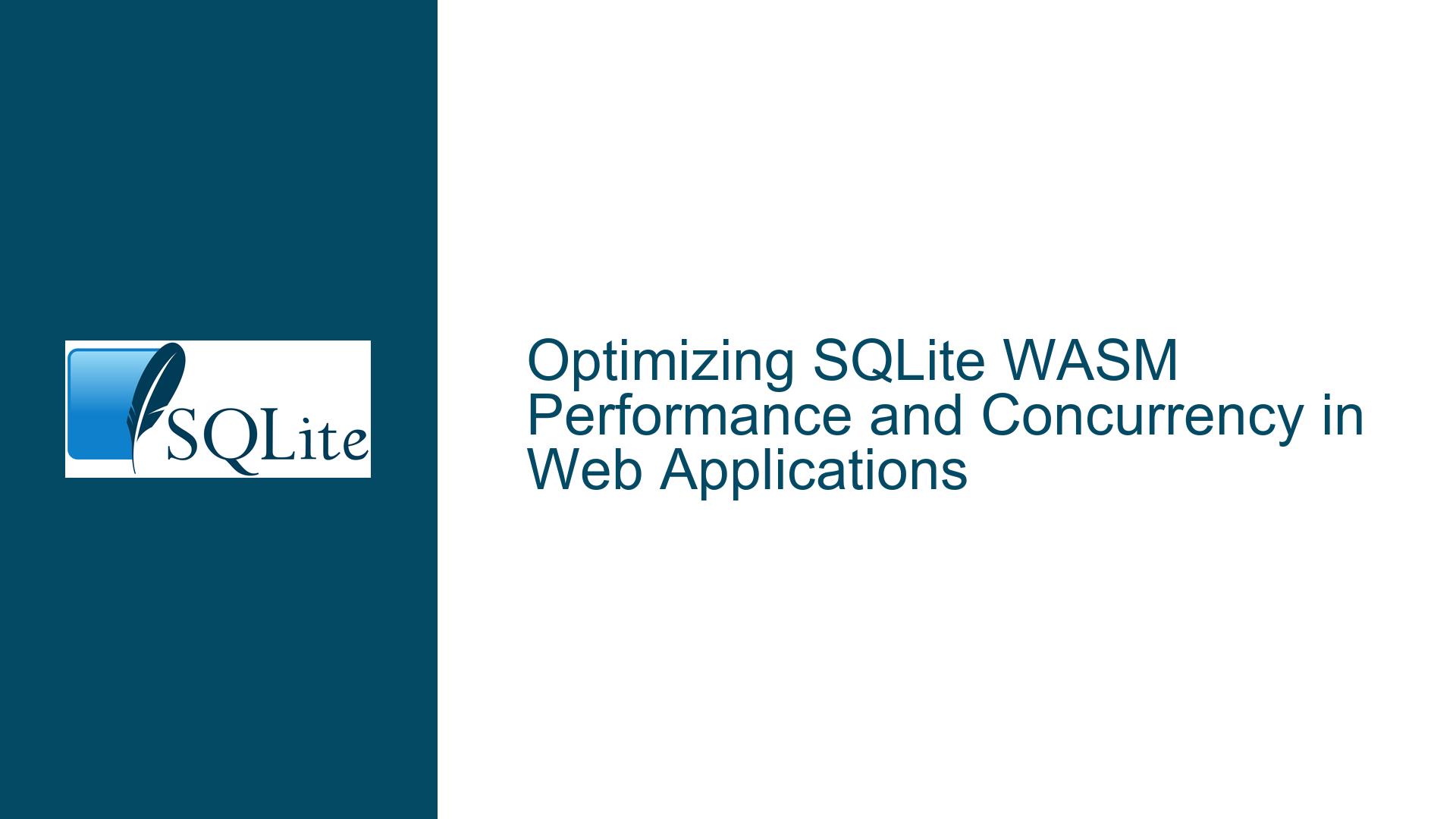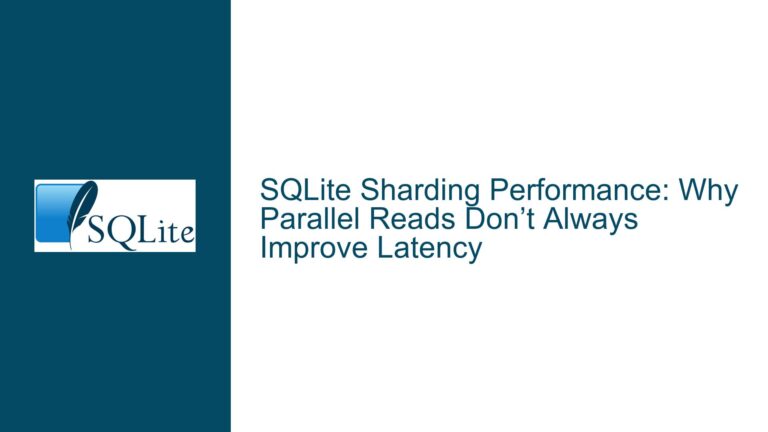Optimizing SQLite WASM Performance and Concurrency in Web Applications
Understanding SQLite WASM Performance Bottlenecks in Cross-Thread Communication
The performance of SQLite in WebAssembly (WASM) environments, particularly when using the Origin Private File System (OPFS) Virtual File System (VFS), is a critical concern for developers aiming to integrate SQLite into web applications. One of the primary challenges lies in the communication between the UI thread and the worker thread, where data must traverse multiple layers of abstraction. This process inherently introduces latency, which can significantly impact the overall performance of the application.
When a query is initiated from the UI thread, it must be sent to the worker thread for execution. The worker thread processes the query, interacts with the OPFS VFS to retrieve or modify data, and then sends the results back to the UI thread. This round-trip communication is not instantaneous and is subject to the limitations of the browser’s threading model and the underlying hardware. The SharedArrayBuffer is used to facilitate this communication, which, while efficient, still incurs a performance cost due to the need for thread synchronization.
The OPFS VFS itself has been optimized to perform at approximately three times the speed of native C implementations, which is a commendable achievement. However, the cross-thread communication overhead can account for up to 40% of the total runtime, as measured in recent benchmarks. This overhead is unavoidable and is a direct consequence of the browser’s architecture, which prioritizes security and stability over raw performance.
Exploring the Limitations of Concurrency in SQLite WASM with OPFS VFS
Concurrency in SQLite WASM, particularly when using the OPFS VFS, is another area that requires careful consideration. The OPFS API currently only supports exclusive locks, which means that only one thread can hold a lock on a file at any given time. This limitation directly impacts the ability of SQLite WASM to handle multiple concurrent connections efficiently.
The current implementation of the OPFS VFS includes a mechanism called "unlock-asap," which attempts to mitigate the concurrency limitations by releasing locks as soon as possible. While this approach does allow for a higher degree of concurrency, it comes at a significant performance cost. In I/O-intensive tests, the performance hit can be as much as 400%, which is a substantial trade-off.
The "unlock-asap" mode allows for a higher number of concurrent connections, with some tests showing up to 10 connections running contention-free. However, this is not a reliable figure, and a more conservative estimate would place the safe upper limit at around five or six connections. Beyond this point, the likelihood of locking errors increases significantly, which can lead to application instability and data integrity issues.
The limitations of the OPFS API are well-known, and there are ongoing efforts to extend the API to support more granular locking mechanisms, similar to those found in POSIX-compliant systems. These extensions would allow for more sophisticated concurrency control, potentially improving the performance and reliability of SQLite WASM in web applications. However, there is no clear timeline for when these extensions will be available, and developers must work within the constraints of the current API.
Strategies for Mitigating Performance and Concurrency Issues in SQLite WASM
Given the performance and concurrency challenges associated with SQLite WASM, developers must adopt a strategic approach to mitigate these issues. One of the most effective strategies is to minimize the amount of data that needs to be transferred between the UI thread and the worker thread. This can be achieved by optimizing queries to return only the necessary data, reducing the size of the result sets, and avoiding unnecessary round-trips.
Another strategy is to batch operations where possible. Instead of sending multiple small queries to the worker thread, developers can combine these queries into a single, larger operation. This reduces the number of cross-thread communications and can lead to significant performance improvements. Additionally, developers should consider using prepared statements, which can be more efficient than ad-hoc queries, especially when the same query is executed multiple times with different parameters.
In terms of concurrency, developers should be mindful of the limitations of the OPFS VFS and design their applications accordingly. This may involve limiting the number of concurrent connections to a database, or implementing application-level locking mechanisms to prevent conflicts. The "unlock-asap" mode can be used to increase concurrency, but developers must be aware of the performance trade-offs and test their applications thoroughly to ensure stability.
Finally, developers should stay informed about updates to the OPFS API and the SQLite WASM implementation. As new features and improvements are introduced, they may provide opportunities to further optimize performance and concurrency. In the meantime, developers can experiment with different configurations and settings to find the optimal balance between performance, concurrency, and reliability for their specific use case.
In conclusion, while SQLite WASM offers a powerful tool for integrating SQLite into web applications, it is not without its challenges. By understanding the performance bottlenecks and concurrency limitations, and by adopting strategic approaches to mitigate these issues, developers can create robust and efficient web applications that leverage the full potential of SQLite in a WASM environment.






